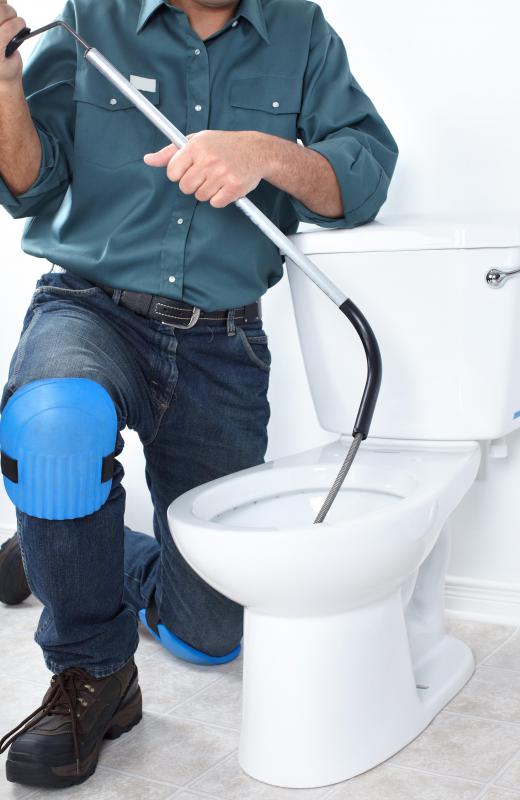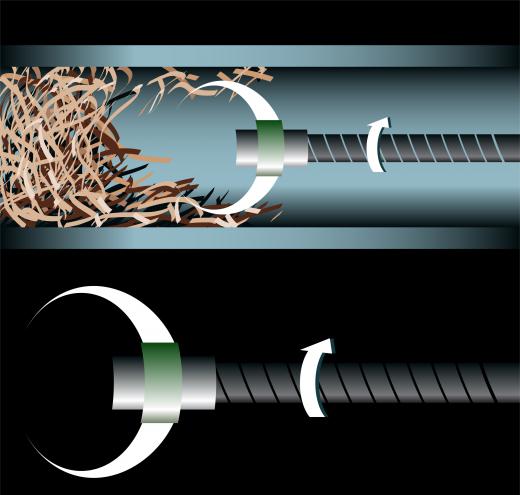A closet auger, also known as a toilet auger or a plumbing snake, is a device for clearing obstructions from toilet drains. It consists of a long flexible metal coil with a hand crank on one end and a metal tip on the other. The handle and tip are connected by a strip of metal running through the center of the coil, and cranking the handle rotates the tip. A typical closet auger is about 3 feet (1 m) long, which is long enough to clear most blocks in toilet waste lines.
The term "closet" comes from the early days of plumbing when the toilet was typically hidden in a closet. Any device or fitting with that term in its name, such as a closet flange, is designated for use in and around toilets. A sink auger is a different tool than a closet auger, with a thinner and more flexible coil designed to fit in P-traps and drains that are more fragile than a toilet waste line. Using a closet auger to attempt to clear a sink obstruction is not recommended and may damage the plumbing.

The usual procedure for using a closet auger is to insert the head of the tool into the toilet drain and push it in until it encounters the obstruction. Cranking the handle rotates the head, which is barbed or designed as a spiral, and works it through the blockage. Once the obstruction clears and water begins to drain, the user pulls the head back out of the drain, and the obstruction usually comes with it. Working around a toilet involves the inherent possibility of being exposed to unsanitary conditions, so it is advisable to wear rubber gloves and take other steps to avoid contamination, including washing up thoroughly after the repair has been completed.

Since the reach of a closet auger is limited to 3 feet (1 meter), it cannot access blockages deep in the waste line. In the event of an obstruction that is not in the immediate vicinity of the toilet, it is possible to insert a closet auger through an accessible opening, such as the clean-out located at the base of the waste stack. With one person plunging the toilet to move the obstruction downwards, another operates the auger from farther down the line, and the action of the head breaks up the obstruction incrementally as it approaches. When water begins to flow, the obstruction can be pulled out with the auger.
